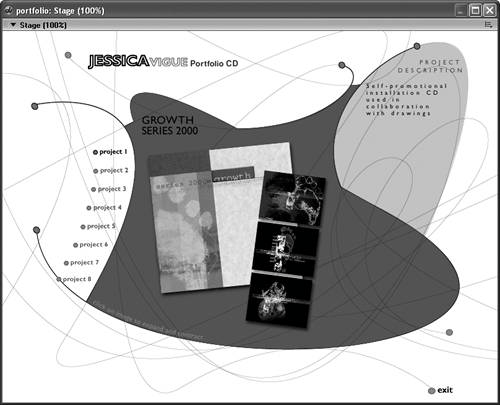Chapter 4. Using Video
| What You Will Learn In this lesson, you will:
Approximate Time This lesson should take you about 2 hours to complete. Lesson Files Media Files: close_call.swf close_call.mov close_call.mpg close_call_frame_one.png btn_play.png btn_play_hi.png btn_pause.png btn_pause_hi.png btn_stop.png btn_stop_hi.png Starting Files: portfolio_start.dir Completed Files: None This is the fourth lesson in the Portfolio Presentation project. In this lesson you'll learn about the various digital video formats, as well as using and controlling video. The completed portfolio project  Digital video is any kind of motion sequence that has been stored in a digital file. The video could be a captured TV show, a rendered 3D animation, orwith Director MX 2004even DVD. Director can handle numerous video formats including QuickTime, RealVideo, AVI, Windows Media, and MPEG. Unlike video destined for playback on a television, which needs to be a specific size, digital video on a computer can be just about any dimensions you want. This gives you a lot of freedom, allowing you to mix still images and video in the same frame. For example, you could have a training applicationa talking-head video, sayplaced in a corner of the screen that would appear and explain key topics. And, with a little bit of Lingo, bullet points or other indicators can appear when specific points (called cue points) in the video are reached. |
EAN: 2147483647
Pages: 166
- ERP Systems Impact on Organizations
- Challenging the Unpredictable: Changeable Order Management Systems
- Enterprise Application Integration: New Solutions for a Solved Problem or a Challenging Research Field?
- Data Mining for Business Process Reengineering
- Development of Interactive Web Sites to Enhance Police/Community Relations